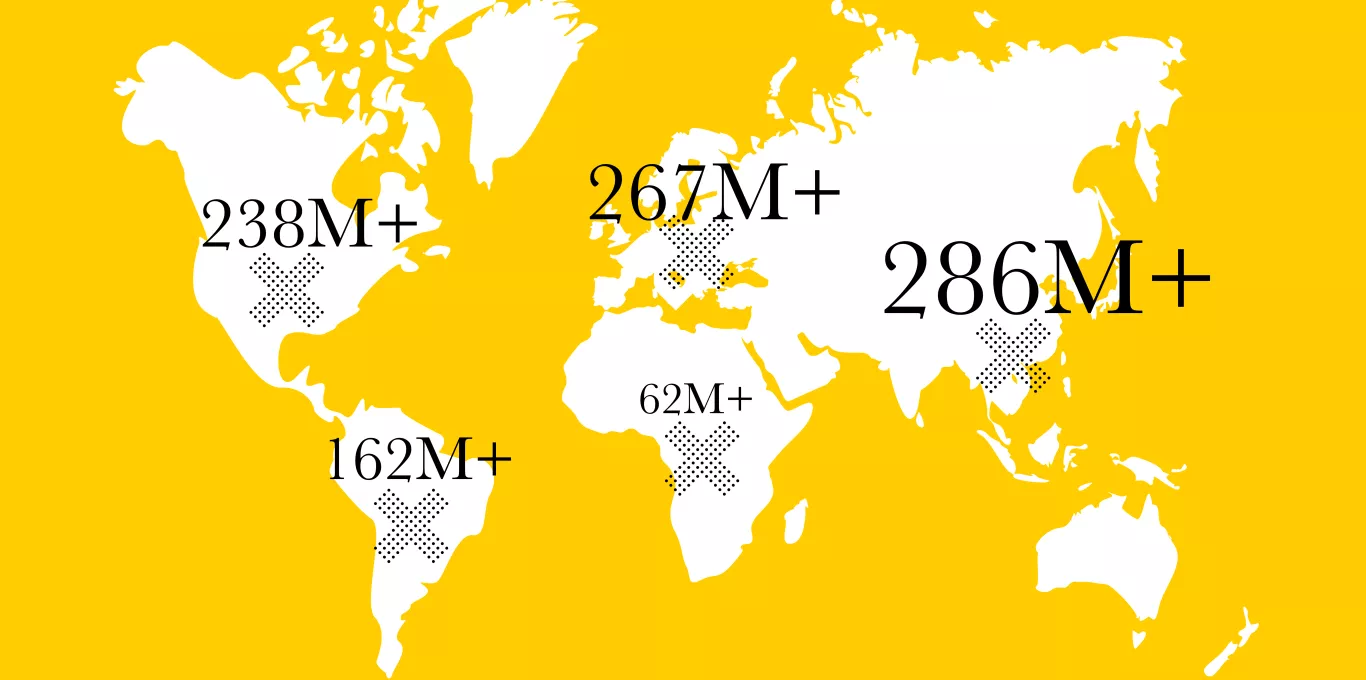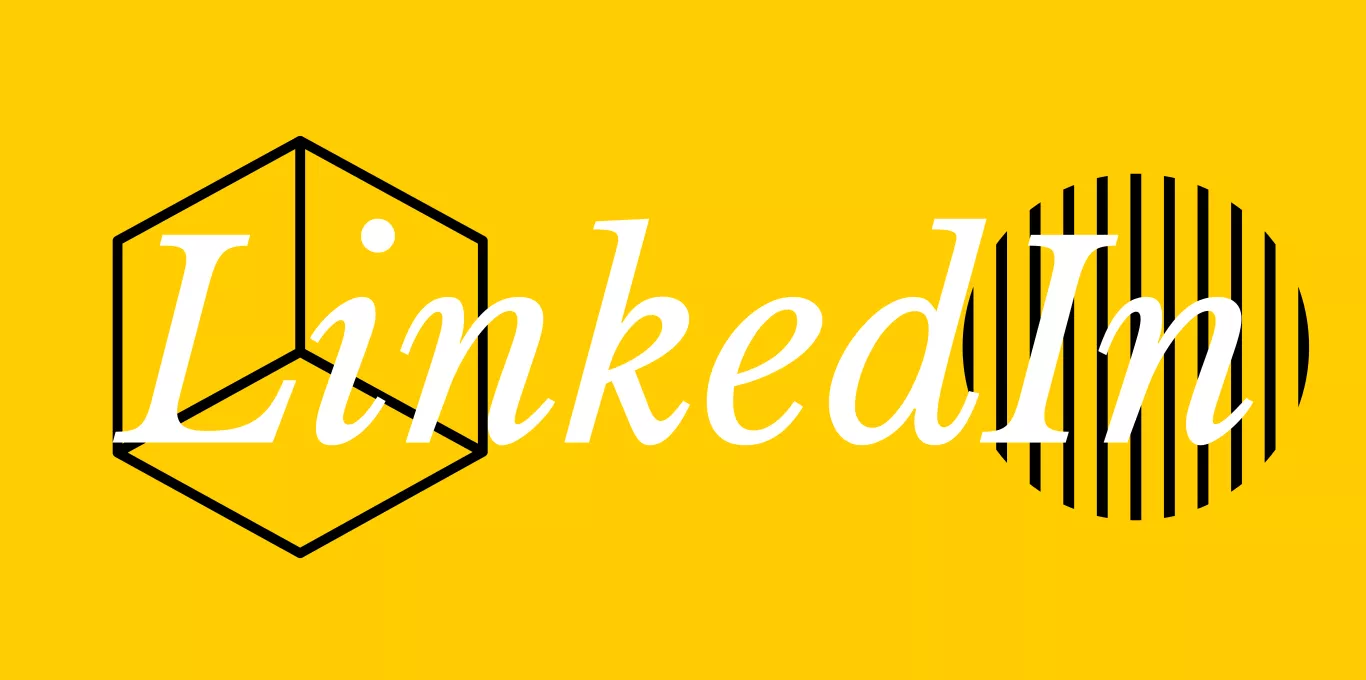LinkedIn celebrated 20 years in business in 2023. The professional networking platform has evolved drastically in two decades and is no longer just a hiring platform. It has now become a source of thought leadership and community as well as an important advertising medium.
B2B businesses who are not frequently active on LinkedIn and growing their followers are potentially missing a huge opportunity for their business. At the beginning of 2024, according to its own data LinkedIn counted over 1 billion users and 47 million companies registered on the platform with 4 out of 5 members involved in business decision making.
Businesses have the chance to engage their target audience with their brand on an ongoing basis when they become followers.
Why LinkedIn followers are important in B2B marketing
The followers of an account are the primary audience for its content. Followers usually contain a mix of existing/past customers, employees, industry peers, suppliers and the company’s target audience for future business. LinkedIn offers a podium to showcase the best things about a business in front of these followers.
Here are the top areas where generating a targeted LinkedIn audience offers the biggest advantages for B2B marketing.
Increasing brand awareness
Does your business want to be front of mind when it comes time for a prospective buyer to purchase a product or service like yours? The answer is most likely yes!
That is the essence of brand awareness.
The more followers a business has the better the impact on brand awareness. When pages publish content, their followers are going to be the first to see it, as they interact with the content that helps it to display in more places in their network, thus expanding a brand’s reach more and more all the time.
Using a combination of paid and organic content, brands can control what their audience on LinkedIn know about them. Businesses can use LinkedIn to showcase products or services as well as knowledge and leadership in a particular field, they can elevate their reputation by celebrating successes and strategic hires, they can keep customers informed about updates and generally attract all the right attention.
Generating leads
According to a report cited by LinkedIn, 89% of B2B marketers use LinkedIn for lead generation and 62% say it is effective for generating leads.
There are different methods you can use to generate leads. Businesses will need to consider the buyer journey, sales cycles and resources that can be put into the activity. To be successful they will need well thought out messaging, good-quality visuals and an investment strategy.
Businesses that are willing to invest can use paid ads designed to encourage specific actions such as filling out a lead gen form, obtaining email addresses or phone numbers through downloading whitepapers or prompting actions such as visiting their website.
Companies can leverage their followers in lead generation campaigns through targeting their existing followers. They can also use their followers to create similar audiences or even target competitors’ followers.
Targeted audiences
LinkedIn is a highly effective way for B2B businesses to narrow in on their target audience. You can target users in your ads according to location, industry, seniority in the company, job titles, job functions, company names. You can also upload email lists and target existing prospects (if their email is linked with their LinkedIn account).
For a business who is headquartered in one region but trying to sell in another region, LinkedIn offers the perfect medium to reach them.
Here is a breakdown of LinkedIn’s global membership as of February 2024.

Companies can use this advanced targeting capability to build a highly relevant and targeted following on their LinkedIn profile to leverage brand awareness and lead generation.
Talent acquisition
As well as offering lead generation potential, businesses can use LinkedIn for talent acquisition. A whopping 140 job applications are submitted every minute on LinkedIn indicating that the professional network is more relevant than ever for companies hiring new talent.
A company’s community of followers on LinkedIn is going to attract peers from their industry, ancillary industries, and aspiring talent. Businesses can use the jobs feature to post jobs to active job seekers and use their company page to promote opportunities to their existing followers and encourage them to share the opportunity.
Leveraging the business’ existing network for new roles offers many benefits for the recruitment process such as referrals, reduced hiring costs and potentially shorter lead time.
Follower data
Companies can use LinkedIn to understand more about their business and audience.
Brand awareness is an important goal for virtually every business but it can be a difficult goal to measure. Follower growth is a key metric for brand awareness as businesses can quantify how much their brand is getting noticed and resonating with their business community.
They can then use these insights to learn what is and is not working, learn more about potential customers and evolve their overall strategy.
Follower demographics offer businesses the opportunity to see a high-level breakdown of the demographics of the profiles who are currently following their page. The categories that can be analysed include location, industry, seniority, job function and company size. Insights can be used in many ways. For example, seeing a large number of followers in a region where there is scope for expansion may feed into decision-making and strategising for such a move.

How to track follower growth on LinkedIn
Tracking growth metrics provides valuable insights into audience engagement and content performance so that brands can refine and evolve their activity on LinkedIn for maximum impact and ROI. These are some important metrics to track when it comes to followers on LinkedIn.
Follower growth is often tracked month on month or year on year to see growth over a period of time. To calculate your follower growth subtract the number of followers a business has at the end of the chosen timeframe from the number of followers at the start of the time-frame.
Follower growth rate goes a step further from the follower growth metric. It allows businesses to measure as a percentage rather than a number which might be slightly arbitrary. After all, growing your business by 300 followers in a month could be a great result for an SMB but a poor result for a large business with tens of thousands of followers. Calculate the follower growth rate through the number of followers you gained divided by the number of followers you started with in the time period you are analysing then multiply times 100.
Strategies to grow your business on LinkedIn
There are no silver bullets when it comes to growing a company’s LinkedIn following, it does take time and effort. Businesses should use a combination of the methods below while continually reviewing and evolving their strategy to find what is working best.

"Company pages who post weekly have 5 times more followers than those who post monthly and their pages also grow a whopping 7 times faster"
Consistent content
The advanced algorithms of LinkedIn are geared to reward and encourage active users who contribute to the LinkedIn community and help it to thrive. Ad-hoc posting is unlikely to deliver strong results as the social network giant has clearly stated that company pages who post weekly have 5 times more followers than those who post monthly and their pages also grow a whopping seven times faster.
Varied content
Some people value informative blogs, some people enjoy eye-catching graphics and some will offer their opinion in a poll. Businesses should create content strategies that cater to the different preferences that a target audience has to engage them and grow followers.
Content should vary in more than just format. A common trap that B2B falls into is focusing all their content on selling, selling, selling. The modern-day audience has grown up in a world of advertising and they expect to be engaged by brands even in a more professional setting on LinkedIn.
Keeping a business hat on is still essential to representing a business on LinkedIn. Content should aim to educate, empathise with and inspire the audience in an authentic way that is relevant to their business.
Paid ads strategy
Paid ads on LinkedIn enable businesses to amplify their reach beyond their existing network. The ads can be targeted to specific audiences across a range of demographics and attributes enabling businesses to grow a highly relevant following.
To be effective in achieving continuous follower growth, LinkedIn ads require regular monitoring and refining. Businesses need to think carefully about their desired spend on ads, their goals, target audience, calls to action and quality of the content. Refreshing content regularly is also important to avoid sharing the same content repeatedly with the same audience.
Employee advocacy
By encouraging employees to engage with and share company content on their personal profiles, businesses can significantly increase their visibility and attract new followers organically. Employees are often seen as more relatable and trustworthy than corporate accounts, making their endorsements and shares more influential in attracting followers.
Maverick grew our clients’ LinkedIn followers by 60% in 2023

Our marketing team at Maverick are dedicated to amplifying your brand’s presence and generating leads through a range of tactics across marketing channels.
When looking at our client cumulative data from the second half of 2023, we saw that on average we grew our clients LinkedIn followers by 60% and up to 219% in some cases.
LinkedIn is one of the most important channels in B2B marketing and we work with it every day learning every nuance of the platform and getting a bird’s eye view of what strategies are most effective.
With our guidance, your business can navigate the complexities of B2B marketing and effectively engage with your target audience, driving conversions and fostering long-term relationships.
Get in touch with Maverick today to grow your business through LinkedIn and other key channels.




